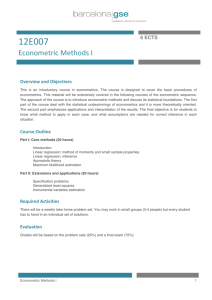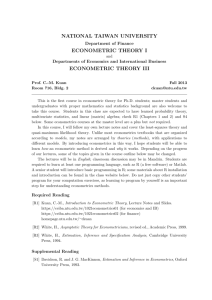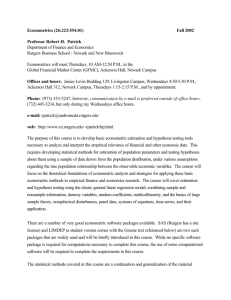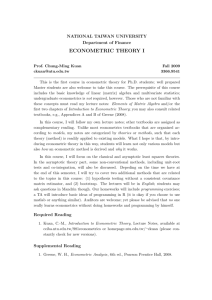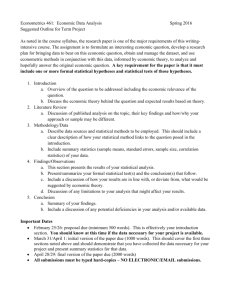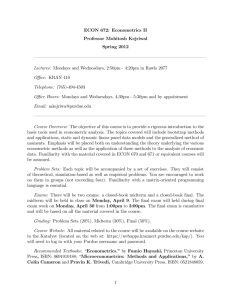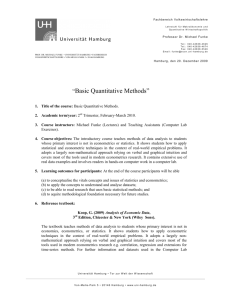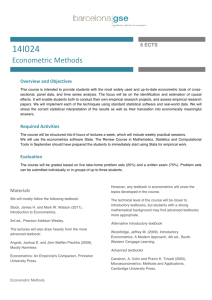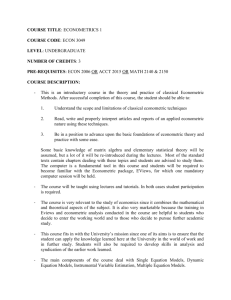AMA481 - PolyU
advertisement
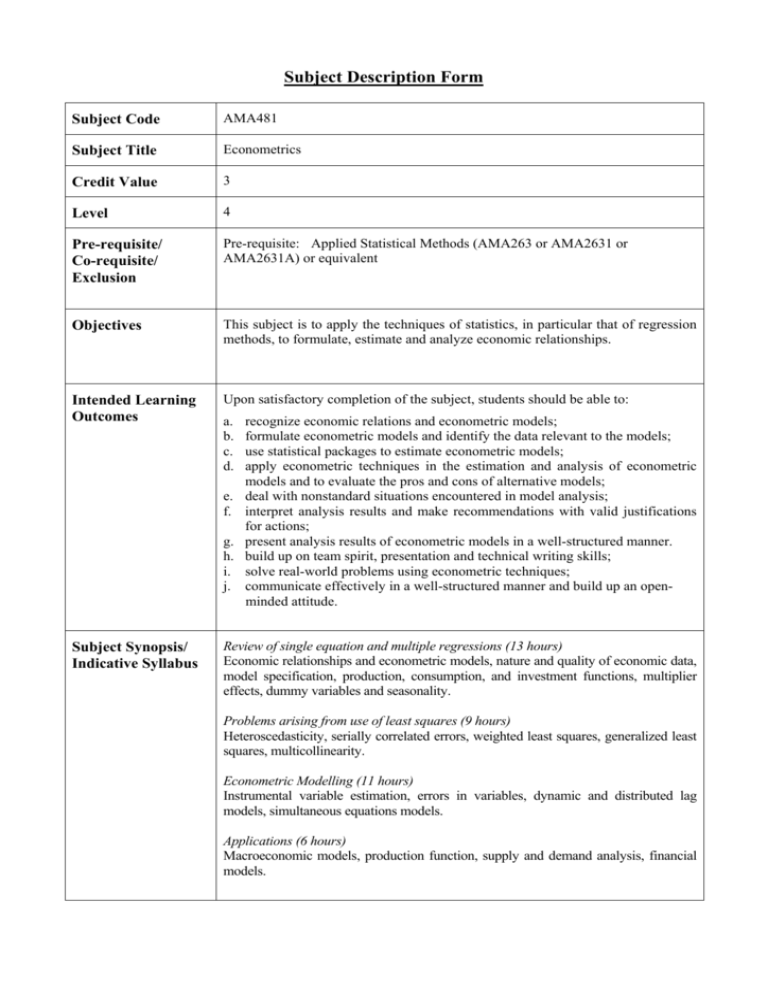
Subject Description Form Subject Code AMA481 Subject Title Econometrics Credit Value 3 Level 4 Pre-requisite/ Co-requisite/ Exclusion Pre-requisite: Applied Statistical Methods (AMA263 or AMA2631 or AMA2631A) or equivalent Objectives This subject is to apply the techniques of statistics, in particular that of regression methods, to formulate, estimate and analyze economic relationships. Intended Learning Outcomes Upon satisfactory completion of the subject, students should be able to: a. b. c. d. e. f. g. h. i. j. Subject Synopsis/ Indicative Syllabus recognize economic relations and econometric models; formulate econometric models and identify the data relevant to the models; use statistical packages to estimate econometric models; apply econometric techniques in the estimation and analysis of econometric models and to evaluate the pros and cons of alternative models; deal with nonstandard situations encountered in model analysis; interpret analysis results and make recommendations with valid justifications for actions; present analysis results of econometric models in a well-structured manner. build up on team spirit, presentation and technical writing skills; solve real-world problems using econometric techniques; communicate effectively in a well-structured manner and build up an openminded attitude. Review of single equation and multiple regressions (13 hours) Economic relationships and econometric models, nature and quality of economic data, model specification, production, consumption, and investment functions, multiplier effects, dummy variables and seasonality. Problems arising from use of least squares (9 hours) Heteroscedasticity, serially correlated errors, weighted least squares, generalized least squares, multicollinearity. Econometric Modelling (11 hours) Instrumental variable estimation, errors in variables, dynamic and distributed lag models, simultaneous equations models. Applications (6 hours) Macroeconomic models, production function, supply and demand analysis, financial models. Teaching/Learning Methodology Assessment Methods in Alignment with Intended Learning Outcomes The subject will be delivered mainly through lectures and tutorials. The lectures will be conducted to introduce the econometrics concepts of the topics in the syllabus, which are then reinforced by learning activities involving demonstration, tutorial exercise and assignments. Specific assessment methods % Intended subject learning outcomes to be weighting assessed (Please tick as appropriate) 1. Assignments 20% 2. Tests 20% 3. Examination 60% Total a b c d e f g h i j 100 % Explanation of the appropriateness of the assessment methods in assessing the intended learning outcomes: The subject focuses on knowledge, skill and understanding of Econometrics, thus, Exam-based assessment is the most appropriate assessment method, including 20% test and 60% examination. Moreover, 20% worth of assignments are included as a component of continuous assessment so as to keep the students in progress. Continuous Assessment comprises of assignments and tests. examination is held at the end of the semester. A written To pass this subject, students are required to obtain Grade D or above in both the Continuous Assessment and the Examination components in order to satisfy all the intended learning outcomes. Student Study Effort Expected Class contact: Lecture 26 Hrs. Tutorial 13 Hrs. Other student study effort: Assignment 40 Hrs. Self-study 26 Hrs. Total student study effort 105 Hrs. Reading List and References Textbooks: Gujarati, D.N. Basic Econometrics 5th edition McGraw Hill 2008 Maddala G.S. Introduction to Econometrics 3rd edition Wiley 2001 Wooldridge, J.M. Introductory Econometrics: A Modern Approach 5th edition South-Western College Publication 2012 Studenmund, A.H. Using Econometrics: A Practical Guide, International Edition 6th edition Prentice Hall 2010 Pindyck, R.S. & Rubinfeld, D.L. Econometric Models and Economic Forecasts 4th edition McGraw-Hill 1998 Stock, J.H. & Watson, M.W. Introduction to Econometrics 3rd edition Addison Wesley 2010 References:

